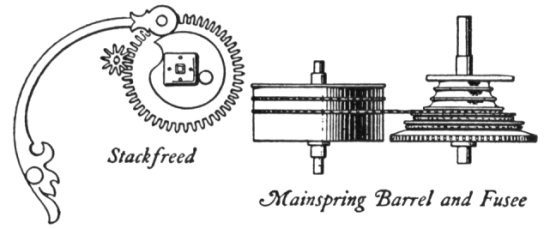Owning Time
Today, we look at time as a new possession. The University of Houston's College of Engineering presents this series about the machines that make our civilization run, and the people whose ingenuity created them.
The mechanical clock was really just the millennia-old water clock with new innards. Looking at an early 14th-century tower clock, you might not know whether the timing mechanism was a draining tank of water or a mechanical escapement mechanism. In either case it was a half-ton structure that kept time, and sounded bells, with an accuracy of about plus or minus fifteen minutes a day.
With its new mechanical innards came the potential for increased accuracy and reduced weight. But, for the moment, clocks couldn't be made portable. The impediment was that the mechanism, and the bells, were driven by falling weights. Replacing a large water tank with heavy weights and cables didn't make clocks any lighter.
To do that, we had to replace the weights with springs. But as a spring unwinds, it exerts less force. How to fight that? Some clever inventor found an answer around 1430. He created a gadget called a fusee. The mainspring casing is wound with a string which drives a cone. As the string unwinds from the cone, its leverage upon the cone shifts. The string exerts greater and greater leverage as the spring unwinds, keeping the torque on the cone's shaft constant.
Now clocks became portable. As the new spring-driven clocks were mounted in ships and carriages, the technology of miniaturization picked up impetus. Author David Landes points out the next terribly important step. It was making clocks small enough for one person to carry.
Once we had watches, there followed a great shift in the very meaning of time. In the years before the watch, time had become a new master. Our eyes turned to the clock tower as its bells marked off the hours. Time turned into a quantity to hoard as we might hoard gold. The notion of saving time entered our vocabulary. A decade before the invention of the fusee, Thomas à Kempis wrote,
It is sad that you do not employ your time better, when you may win eternal life hereafter. The time will come when you will long for one day or one hour in which to amend; and who knows whether it will be granted?
That sentiment lingered, but its texture changed as clocks became personal possessions. Time itself became a possession. Perhaps it's no coincidence that the fusee arrived on the eve of the Protestant Reformation. Clocks had given us the obligation for saving time. Owning time now meant owning responsibility for wasting it.
Still, owning time had its up side. Now we could separate our time from our employer's time. Clocks made that distinction. The tyranny of time is still with us, but portable clocks made it a self-imposed tyranny. Nothing grieves me quite so much as the person who's so schedule-driven as to have no time for a friend or for a side road. Nothing is so delicious as being able to set time aside now and again and to live only in the moment at hand.
I'm John Lienhard, at the University of Houston, where we're interested in the way inventive minds work.
(Theme music)
Landes, D.S., Revolution in Time; Clocks and the Making of the Modern World. New York: Barnes and Noble books, 1983, Section II, Keeping Time.

From Usher, A. P., A History of Mechanical Inventions, 1929/1954
Two devices for keeping the torque delivered to the drive train constant, as the spring winds down: The Stackfreed on the left exerts diminishing friction as the spring winds down. The Fusee on the right is driven by a main spring in the barrel next to it. As the spring winds down, it exterts its force on an increasing radius. That results in a net constant torque to the fusee shaft.